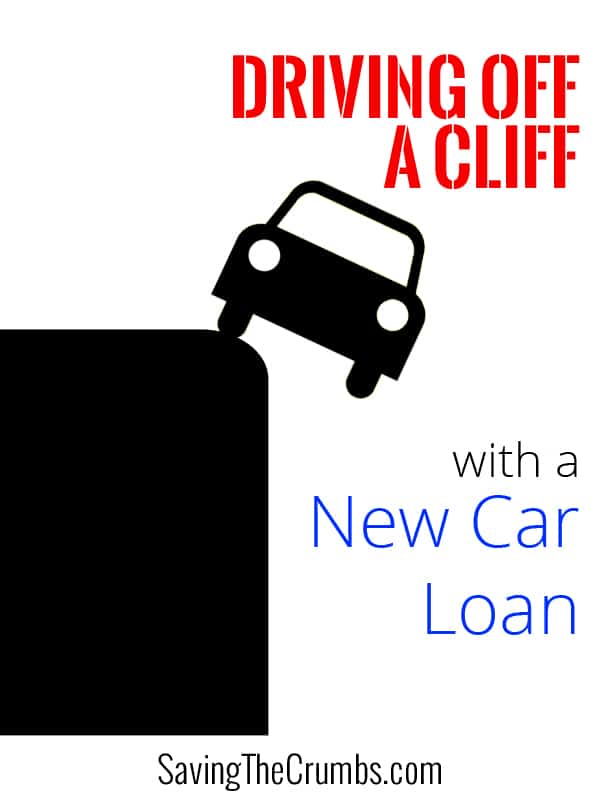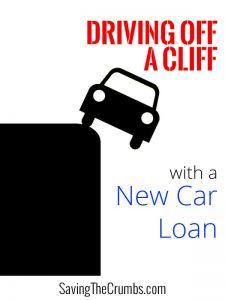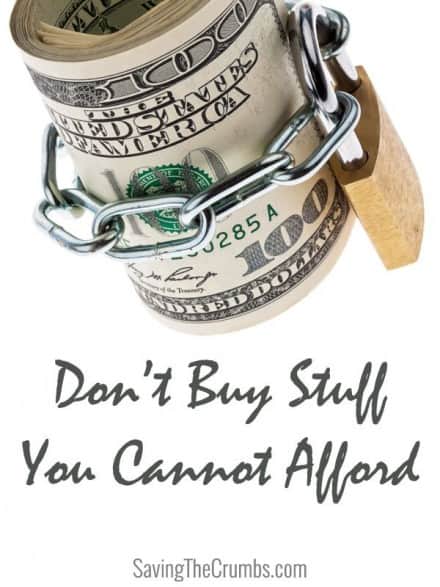If all your friends jumped off a cliff, would you jump too?
~ Your Mom
Yes, we are familiar with this proverbial ace up Mom’s sleeve whenever we urge popular opinion as the basis for doing something questionable. And yes, we all recall the wailing and gnashing of teeth when we were unable to rebut Dear Mother’s incontrovertible reasoning. Ah yes, you remember those good ol’ days? Back when we were children and we had our all-knowing Matriarch to dispel any notion of folly and idiocy, preserving us from our own ignorance? Don’t you miss those days when Ma, in such love and wisdom, gives us the verbal smack down so we don’t wander aimlessly down the path of mediocrity, succumbing to the destructive forces of peer pressure?
If so, today’s your lucky day because you’re about to get a dose of some good old fashion common sense.
Because all your friends are jumping off a cliff and you’re probably about to!
Don’t Jump!
There are many unfortunate things one can do in life. One of them is to buy a brand new car. Another one is to borrow money. But when you put them together—borrowing money to buy a new car—that’s equivalent to blindly jumping off a cliff. Don’t do it!
A Cocktail of Cliff-jumping Madness
Cars are depreciating assets. This means that from the moment you drive one off the dealer’s lot, its value marches interminably down—forever. So a car purchased for $25,000 or $50,000 will both one day very soon be worth nearly $0. And the biggest chunk of depreciation comes out in the earliest period of a car’s life. This fact by itself should make any Crumb Saver in his or her right mind make a lifelong vow against buying new vehicles.
Debt is the privilege of using someone else’s money first and repaying them later. That privilege comes at a price called interest (as well as slavery to the lender, but I digress). What really matters to the Crumb Saver is that you are paying more than the actual value of what you’re buying. So buying something worth $1000 with a 10% loan means you actually paid $1100.* We sugar coat it and call it “financing the purchase,” when all it really means is “getting ripped off.” We do it to get instant gratification, and also because it feels less painful when we pay small bits at a time rather than a huge chunk. But dying by a thousand cuts versus dying in one blow is still death—kinda like what happens when you jump off a cliff.
Put these two things together and you get a real toxic cocktail of cliff-jumping madness. So if you take out a $25,000, 60-month, 5% interest loan to buy a new car, your car will be worth $13,000 at the end of the five years, but you would have paid $28,300!** Would anyone in his or her right mind EVER pay an extra $15,300 for something that is worth only $13,000? That’s overpaying by 117%!
This is like rolling down the window of the car and throwing out $8.40 every single day for five years.
As if things couldn’t get any worse, you know what happens for a lot of people at the end of five years? They get a new car and start the same thing all over again!
Someone stop the madness!
The Real Problem
We think that buying new cars are the only way to have transportation. We think that borrowing money is the only way to buy new cars. And we never think differently because apparently that’s what everyone does. Everybody has a car payment! So that’s what I must have too, right? That’s why “everybody” wonders why they are in debt and broke on their daily commute, all while the car they are riding in siphons their hard earned cash from their wallets.
Mom’s sage advice applies here with just as much force as those prepubescent days of peer pressure.
Back away from the cliff. You don’t have to jump. There’s a better way.
A Better Way
- Determine your need – The single most important principle to save money applies to cars just like everything else. Do you really need a car? Can you walk, bike, carpool, take public transport instead? Do you really need a second (or third or fourth or fifth) car? Do you really need to save that car for your unborn child to drive when he turns 16? Getting by with as little car as possible will save you a ton of money over the long haul.
- Buy used cars –Cars are not investments for most people. They are not assets that make money or appreciate in value. So as a tool used for transportation that depreciates rapidly in value, the calculation has to be made between the utility of the tool versus the cost. You can absorb the depreciation yourself, or you can let someone else pay the depreciation while you get the privilege of driving the car at a discount. You will always come out financially ahead buying a used car instead of a new one.
- Save up and pay cash – If you can afford to pay the bank a $471/month car payment (what you would be paying in the example above), then you can afford to pay that amount to yourself. (If you CAN’T afford to pay yourself the equivalent of the monthly car payment that you want to take out, then you have no business buying a car at all!) If you save up that amount each month now, you’ll have $5652 in one year. Suppose that at the end of one year you need an upgrade and you can sell your current car for $2000, you’ll have $7652 to spend on an upgrade. That level of car is more than enough for most people, but if you continue saving up at a rate of $471/month for another year, you’ll have another $5652 saved up. You could sell your existing car and then upgrade to another one, or you can just keep driving your perfectly serviceable used vehicle and continue saving. This cycle can continue as you work up in value of car. If you kept this up for 5 years (how long the car loan would have been) without upgrading your car in the meanwhile, you would have saved $28,260 total plus the value of your existing vehicle—enough cash for any Crumb Saver to buy an entire fleet of cars. All of this without paying a dime in interest, in fact you could have invested that money during the 5 years and have EARNED interest on it!
- Be a Leader, not a Lemming – Make a solemn oath to yourself to never borrow money to buy a car. You never need to. Dare to be different. Be fine with delayed gratification. Instead of driving off the cliff in your brand new financed vehicle with all your broke friends, be the leader to motivate them to climb the mountain of frugality instead.
Excuses Objections***
I can already feel the eyebrows being raised by the skeptics who have ridden in new, financed vehicles their entire lives. Here are some of the most common excu..(ahem) objections that I’ve heard:
“Used cars aren’t reliable” – Have you ever told your kids, “Everyone! Get out of the car! This car just isn’t safe anymore because I’ve been driving it for 3 years!” Sure it may take just a bit more effort to find a reliable used car (i.e. low mileage, garaged, clean title, etc), but who’s to say that new cars are immune to problems too? Many reliable cars can easily go 200,000 miles or more without anything other than regular maintenance.
“I drive a lot” – Sure, certain lines of work require more miles on the road. But unless you’re a taxi driver, it would seem that in most cases, a reliable used transportation appliance is an even better choice, since the rate of depreciation is faster due to the increased mileage being tacked onto the machine. The replacement cycle would also be much quicker than normal, so it’s even more imperative to not overpay repeatedly. If you plan on driving your car until the wheels fall off, then the depreciation doesn’t matter as much, but it STILL makes sense to pay a discount upfront by buying a lightly used vehicle. You CERTAINLY shouldn’t be borrowing money to buy something that will absolutely be destroyed on the road.
“It’s too much hassle” – Would you still think it was too much hassle if I paid you $10,000 to do it? If it took you an extra month to buy a reliable used car for $10,000 less than a new one, congratulations you just earned $10,000 for a month’s worth of work. (That’s equivalent to a $120,000 annualized salary that you don’t need to pay taxes on!)
“But I can get 0% APR” – These financing deals are usually for new cars, and we don’t buy new cars anyway, right? They also are usually only for people with excellent credit and the low APR is only for a limited time. Besides, you will have more negotiation leverage with cash so you’ll likely still overpay with a 0% loan. Also, if you can afford the monthly payment after you buy the car, why not just pay yourself the equivalent monthly payment first and pay for the car in cash? You can skip the risk of paying with credit completely.
Mom’s Got the Final Word
So after traveling many miles with me in this post, the conclusion of the matter is actually very simple. Just remember: Mom is always right.
__________
*If you read that last sentence and thought, “$100 isn’t such a big deal.” Please review this post for some helpful perspective: The Power of the Crumbs.
**That is if you took out an amortized auto loan. If you borrowed from your credit card, the amount you pay in interest would be significantly higher.
***Since I’m sure someone is flailing for an excuse to buy a new car, I will concede that there is one legitimate situation to my knowledge in which purchasing new is better than used. As of this writing, if you are in the market for a 2-3 year old plug-in vehicle (full electric or hybrid plug-in), tax credits and dealer/manufacturer cash rebates may result in a new car actually being cheaper than a recently used one. But this is a specific exception that won’t apply to the vast majority of people since it only applies for that specific type of vehicle, in that specific age range, at a $20k+ price point, and with States/dealers/manufacturers that happens to give enough of a cash back incentive to make the numbers work. In other words, you probably still aren’t an exception and will be better off buying used. Nice try.







